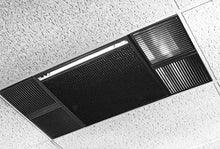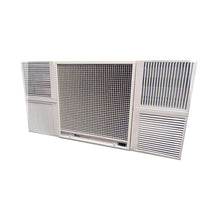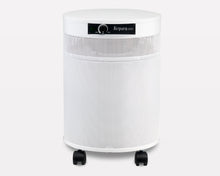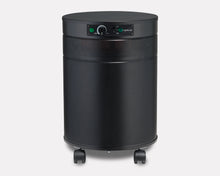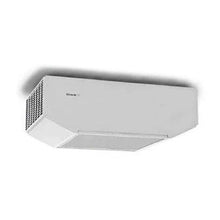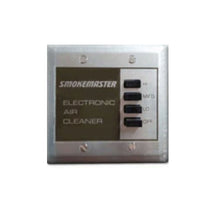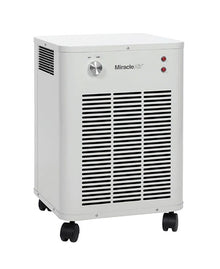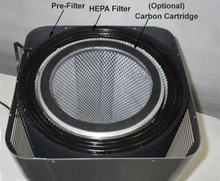The Hidden Link: How Air Quality Directly Impacts Customer Retention in Smoking Establishments

For owners and managers of smoking lounges, cigar bars, and other establishments where smoking is permitted, the focus is often on ambiance, product selection, and service. Yet, there’s a silent, invisible factor that can make or break your business: the air your customers breathe. You’ve invested heavily in creating a comfortable smoking environment, but have you considered that the very air can be a key driver of customer satisfaction—and, more importantly, customer retention? It’s not just about a pleasant smell; it’s about creating a truly comfortable, clean air experience that encourages patrons to stay longer and return more often.
The Problem with Stale Air: More Than Just an Unpleasant Odor
In any smoking establishment, the air is saturated with particulate matter, volatile organic compounds (VOCs), and other harmful byproducts of combustion. While regulars might be accustomed to the environment, new customers or those sensitive to smoke can be immediately put off. This isn't just a matter of preference; it's a measurable business problem. A study from the World Health Organization (WHO) highlights the health risks associated with second-hand smoke exposure, noting that it can cause serious cardiovascular and respiratory diseases. When customers feel a burning sensation in their eyes, a scratchy throat, or their clothes and hair carry the heavy smell of smoke long after they’ve left, it creates a negative association with your establishment. This discomfort, whether conscious or subconscious, directly impacts their willingness to return. It's a fundamental issue of comfort and hospitality that, if left unaddressed, can lead to a steady decline in your customer base. The problem isn’t just about providing a place to smoke, but about making that place genuinely enjoyable to be in.
The Business Case for Clean Air: A Competitive Advantage
The link between a clean environment and customer satisfaction is well-documented in the hospitality industry. Think of a high-end hotel with impeccably clean rooms, or a restaurant with a spotless dining area. These details signal quality and care. The same principle applies to smoking establishments. When the air is visibly cleaner and feels fresher, it elevates the entire customer experience. Customers will perceive your establishment as being more upscale, better managed, and more considerate of their well-being. This doesn't just attract a new clientele; it solidifies the loyalty of your existing customers. A comfortable smoking environment is one where patrons can relax, enjoy a conversation, and savor their product without the distraction of overwhelming smoke.
Experience & Expertise: The Science of Air Quality and Its Impact
As Commercial Air Purifiers, LLC, we have a unique perspective on this challenge. Our work involves understanding the intricate science behind air purification, and we've seen firsthand how these principles apply to real-world business scenarios. The primary components of smoke that impact indoor air quality are particulate matter (PM2.5 and PM10), which are tiny particles that can penetrate deep into the lungs, and a complex cocktail of VOCs like benzene, formaldehyde, and acetone. A 2022 study published in the journal Indoor Air found a direct correlation between improved indoor air quality and occupant well-being and productivity. While this study focused on office environments, the principles are universally applicable: a healthier, cleaner environment directly translates to a more positive user experience.
The data is clear. In a heavily-trafficked smoking lounge, the concentration of these harmful compounds can be multiple times higher than outdoor air. This is a critical factor in a patron’s decision-making process. They may not be able to articulate why they prefer one establishment over another, but a feeling of comfort and well-being often drives their choice. We’ve received feedback from our customers that after implementing a comprehensive air purification solution, their patrons would frequently comment on how much more comfortable the space felt, and how they could stay for hours without feeling congested or having their eyes burn. This isn't a minor detail; it’s a powerful tool for customer retention.
Creating a Genuinely Comfortable Smoking Environment
The first step in addressing this issue is acknowledging that proper ventilation alone is often not enough. While essential, traditional HVAC systems are designed primarily to circulate air, not to actively filter out the microscopic pollutants found in smoke. This is where a multi-layered approach to air purification becomes essential. To truly retain customers, a business must create an environment that feels noticeably different and better than a competitor’s. The feeling of clean air becomes a signature part of the brand experience.
Understanding the right tools is key. A high-efficiency particulate air (HEPA) filter is the gold standard for capturing particulate matter like PM2.5. These filters are capable of trapping 99.97% of particles as small as 0.3 microns. But a HEPA filter alone is insufficient for a smoking establishment. Smoke is rich in VOCs and odors, which are gaseous pollutants that pass right through a HEPA filter. This is where activated carbon comes in. Activated carbon, which has an incredibly porous structure, works by a process called adsorption, where gas molecules are chemically bonded to the surface of the carbon. A high-quality air purifier designed for commercial use will combine multiple stages of filtration, including pre-filters, HEPA filters, and thick beds of activated carbon, to tackle both particulate and gaseous pollutants simultaneously.
When selecting a system, it is crucial to consider the volume of the space and the rate of air exchange. A system that can handle the air volume of your establishment multiple times per hour is a necessity. The EPA provides guidance on indoor air quality, emphasizing the importance of ventilation and filtration in reducing pollutants. Implementing a system that aligns with these standards not only improves the air but also demonstrates a commitment to health and safety, further building customer trust.
Practical Solutions for Business Owners
The good news is that there are practical, actionable steps that can be taken immediately to improve the air quality in your establishment and, as a result, your customer retention. Start by assessing your current situation. Are there areas of the lounge where smoke seems to linger? Do customers often sit near doors or windows to get a breath of fresh air? These are all indicators that your current air quality solution may be inadequate.
Look for commercial-grade air purifiers that are specifically designed to handle the heavy particulate and gaseous load of a smoking environment. These units are built with larger filters and more powerful fans than typical residential units. Consider placing units strategically throughout the space, especially in high-traffic areas or near seating arrangements. The visible presence of these units can also serve as a positive signal to customers that you are proactive about their comfort.
Finally, communicate your efforts to your customers. A simple sign or a mention by staff about the "state-of-the-art air purification system" can reinforce your brand's commitment to providing a superior experience. It turns an invisible amenity into a visible one, further justifying why your establishment is the preferred destination.
Conclusion: Clean Air as a Cornerstone of Customer Loyalty
For any smoking establishment, the path to long-term success is paved with loyal, repeat customers. We’ve explored how the quality of the air is not just a side note but a central factor in creating a comfortable smoking environment that drives customer satisfaction. From the scientific evidence linking air quality to well-being, to the practical steps of implementing a multi-stage air purification system, the message is clear: investing in clean air is a direct investment in your business’s future. It’s a powerful differentiator that sets you apart from the competition, elevates your brand, and most importantly, ensures your customers feel valued and comfortable enough to return again and again.
FAQ Section
How often do I need to change the filters?
Filter change frequency depends on the level of use. For smoking establishments, which generate significant particulate and gaseous pollutants, we generally recommend checking filters every 1 to 3 months. Your air purifier’s manufacturer will provide specific guidance, but a visual check can also tell you if the pre-filter is clogged with dust and smoke residue.
Do air purifiers completely eliminate the smell of smoke?
While no air purifier can completely eliminate all odors, a high-quality system with a substantial activated carbon filter will significantly reduce the smell of smoke, making it far less noticeable and preventing the odor from clinging to clothes and furniture.
How does an air purifier work with a ventilation system?
Air purifiers and ventilation systems work best when used together. Ventilation introduces fresh outdoor air, while a high-efficiency air purifier actively cleans and recirculates the indoor air, trapping pollutants that the ventilation system may not remove. It's a comprehensive approach to maintaining optimal air quality.
What size air purifier do I need for my space?
The right size depends on the square footage and ceiling height of your establishment. You should look for a purifier with a Clean Air Delivery Rate (CADR) that is rated for a space larger than your own to ensure it can handle the constant influx of smoke. Our experts can help you determine the right size and type of unit for your specific needs.

